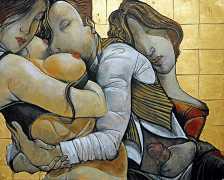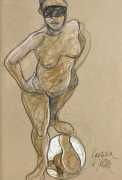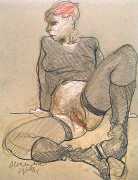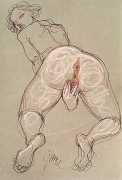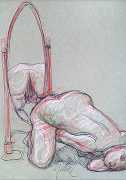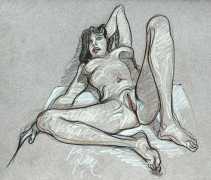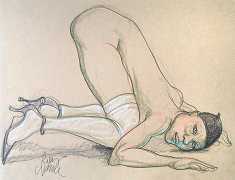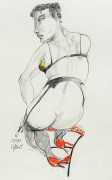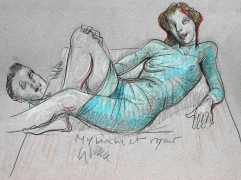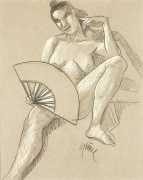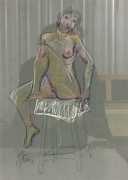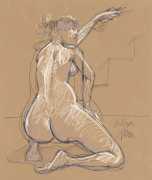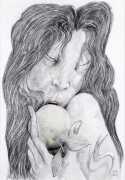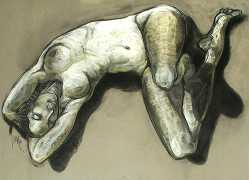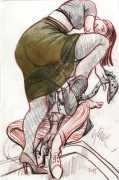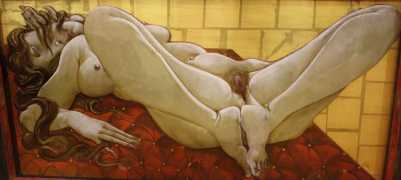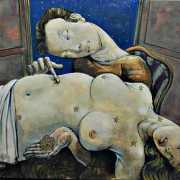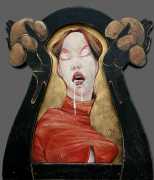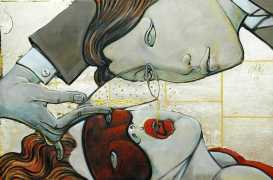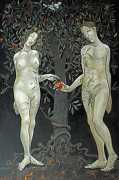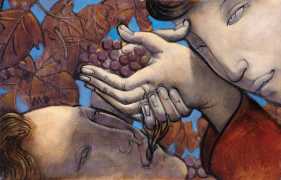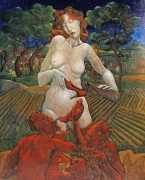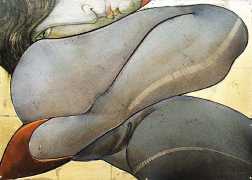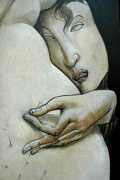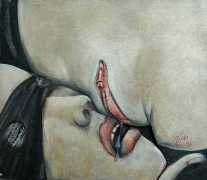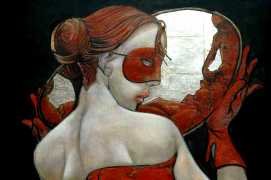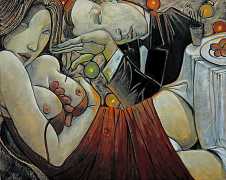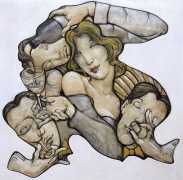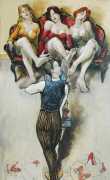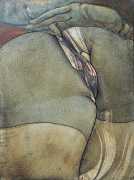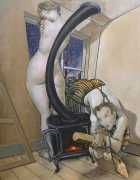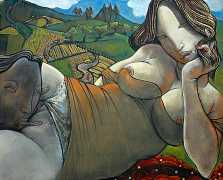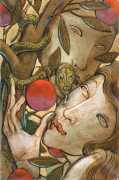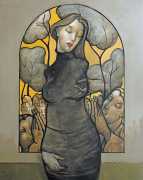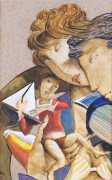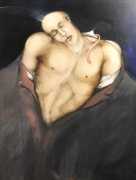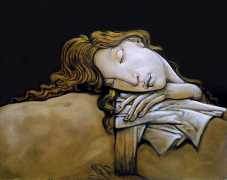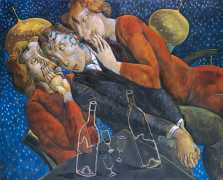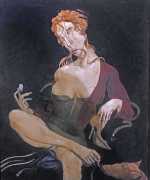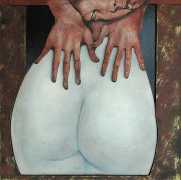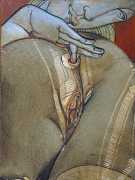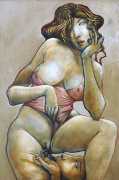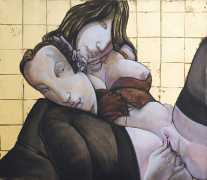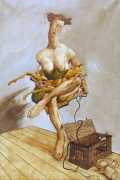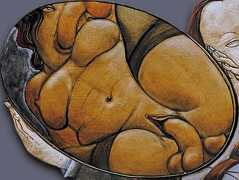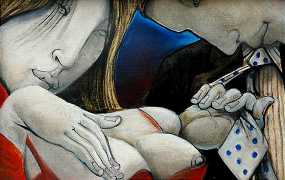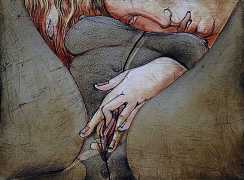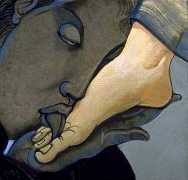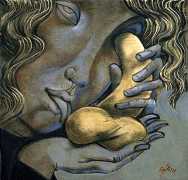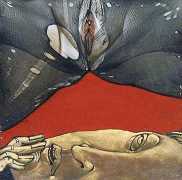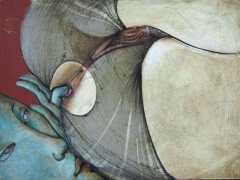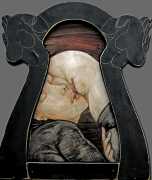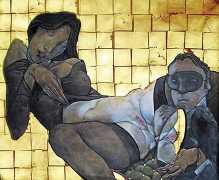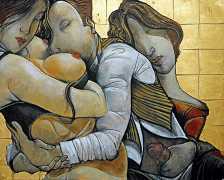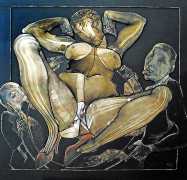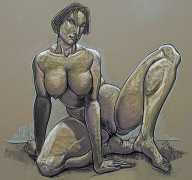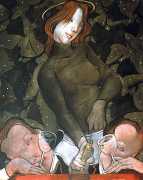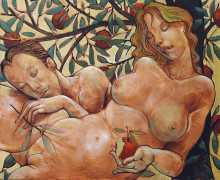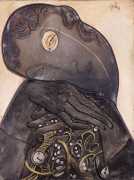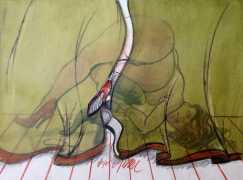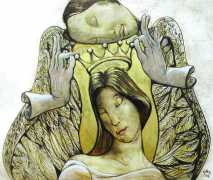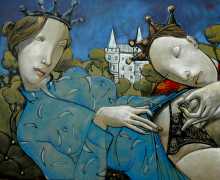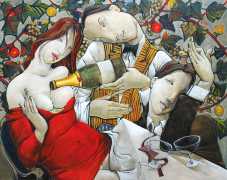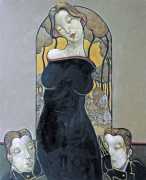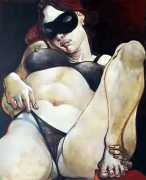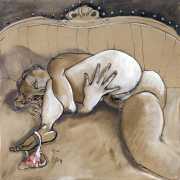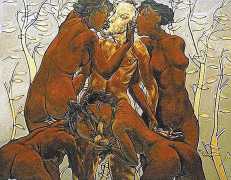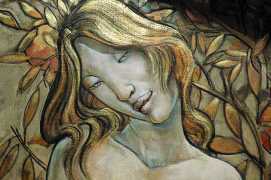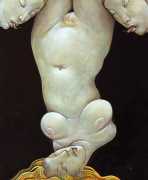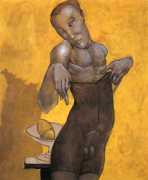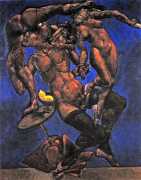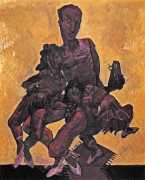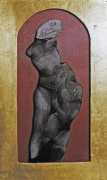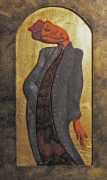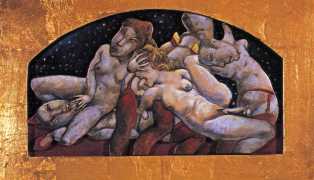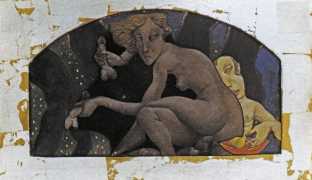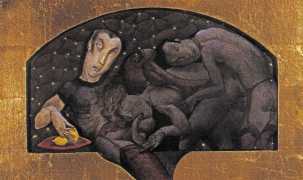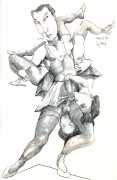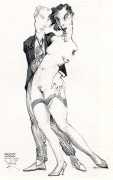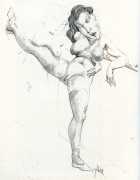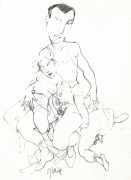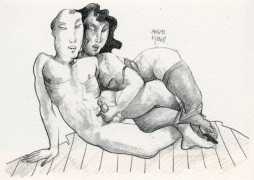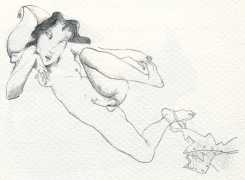 The Paris born and bred artist Jean-Pierre Ceytaire spent his early years at the foot of the hill of Montmartre. Being dyslexic and what is now known as mildly autistic, he had a difficult time at school, managing to get himself expelled, so never obtained his high school diploma, but soon after leaving school he began to study physical therapy. As he explains, ‘I always had a really bad memory, and to help me remember human anatomy I made sketches. This replaced the conventional methods of life drawing that I might have pursued at the École des Beaux Arts. By the time I had continued this career for fifteen years I had caressed and massaged innumerable square kilometers of flesh, which contributed to a particularly tactile sense of memory.’
The Paris born and bred artist Jean-Pierre Ceytaire spent his early years at the foot of the hill of Montmartre. Being dyslexic and what is now known as mildly autistic, he had a difficult time at school, managing to get himself expelled, so never obtained his high school diploma, but soon after leaving school he began to study physical therapy. As he explains, ‘I always had a really bad memory, and to help me remember human anatomy I made sketches. This replaced the conventional methods of life drawing that I might have pursued at the École des Beaux Arts. By the time I had continued this career for fifteen years I had caressed and massaged innumerable square kilometers of flesh, which contributed to a particularly tactile sense of memory.’
At the age of 23 he spent his year of compulsory military service helping in a painting workshop for soldiers with psychiatric disorders; it was after this that he bought his first paints, but it was not until his fortieth birthday, celebrated with a fancy dress gala featuring gangsters and dames, that he finally decided it was time to become a full-time artist. He worked hard to master the skills he now uses, including engraving, lithography and sculpture, and is now well-established on the art scene, exhibiting regularly mostly in France, but also in Switzerland, Belgium, Germany, Denmark, Russia and the United States.
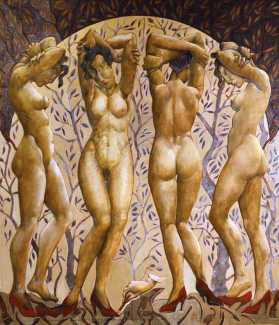
Eroticism and religion are important elements in his work. He has written of these twin strands, ‘Like all of us I am tormented by the great existential questions, and I believe that there are two ways of exploring them. There is one which elevates, where our eyes are turned towards heaven, our wings sprout and the body floats, becoming white and light as the clouds. Then there is the other, which plunges into the abyss; the eyes narrow, the fur sprouts, the hooves and the horns grow, the blood runs purple in the cheeks. Art is all about finding the synthesis, deciding what we put in one category and what in the other.’
Jean-Pierre Ceytaire lives and works from his home in Carrières-sur-Seine, a leafy western suburb of Paris. As far as his relationships are concerned, he replied in a recent interview to the question ‘What are you doing when you are not creating?’ that ‘It all depends on the presence or not of the woman who is above the workshop, I’ll let you imagine how.’
Jean-Pierre Ceytaire’s website can be found here.
We would like to thank our Russian friend and contributor Yuri for introducing us to the work of this artist and supplying many of the images.

